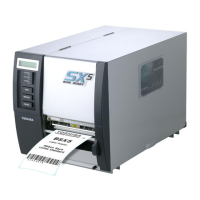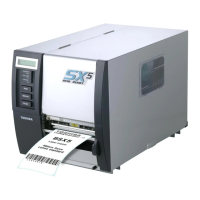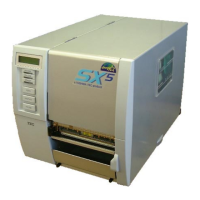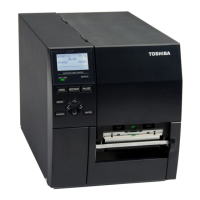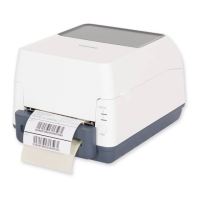1. OUTLINE EO10-33016A
1.5 Electronics Specifications
1-14
READY/BUSY (RTS) Protocol
This is a hardware flow control using RTS signal as a control code.
• When initialized after power on, this printer becomes ready to receive data and converts the RTS
signal to "High" level (READY).
• The printer converts the RTS signal to “Low” level (BUSY) when the free area in the receive
buffer amount to 10K bytes or less.
• The printer converts the RTS signal to “High” level (READY) when the free area in the receive
buffer amount to 512KB or more.
• When there is no free area in the receive buffer, the printer discards received data which exceed
the receive buffer capacity without storing it in the buffer. (After detecting a BUSY signal, the host
computer must stop transmission before the printer receive buffer becomes full.)
• The DTR signal is always “High” level (READY).
• The host should keep the DSR signal “High” level.
NOTE: Be sure to select the READY/BUSY (RTS) protocol when controlling the flow between the
Windows. Also, be sure to select “Hardware” for the flow control in the Windows
communication port setting.
l Pin description
Pin No.
Signal I/O Description
1 FG (Frame Ground) --- Ground line for circuit protection.
2 RD (Received Data) Input
Data line from which the printer receives data from the host
(receive data line).
Logic “1” is “Low”, and “0” is “High”. It is LOW (MARK) while no
data is being sent.
3 TD (Transmit Data) Output
Data line from which the printer sends data to the host (send data
line).
Logic “1” is “low”, and “0” is “High”. It is LOW (MARK) while no
data is being sent.
4 CTS (Clear to Send) Input
Input signal from the host. This printer ignores this signal.
5 RTS (Request to Send) Output
Output signal to the host.
When READ/BUSY (RTS) protocol is selected,
this signal means READY to receive data.
When the receive buffer is nearly full, the signal turns to “Low”,
and “High” when nearly empty.
In case of other protocol is selected, this signal is always “High”
level after the power is turned on.
6 DTR (Data Terminal Ready)
Output signal from the printer.
When READY/BUSY (DTR) or XON/XOFF
(DC1/DC3)+READY/BUSY (DTR) is selected, this signal means
READY to receive data.
When the receive buffer is nearly full, the signal turns to “Low”,
and “High” when nearly empty.
In case of XON/XOFF (DC1/DC3) or READY/BUSY (RTS), this
signal is always “High” level after the power is turned on.
7 SG (Signal Ground) --- Ground line for all data and control signals.
20 DSR (Data Set Ready) Input
Input signal from the host. It must be “High” for the printer to
receive data.
l Interface circuit
Input circuit Output circuit
Signal level
Input voltage: "H" .. +3V~ + 15V Output voltage: "H" .. +6V ~ +13V
"L" ... –3V~ – 15V "L" ... –6V ~ –13V
SR
SN75189 or equivalent
TD
RTS
DTR
SN75188 or equivale
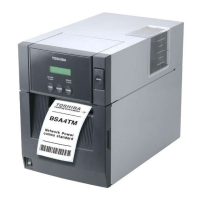
